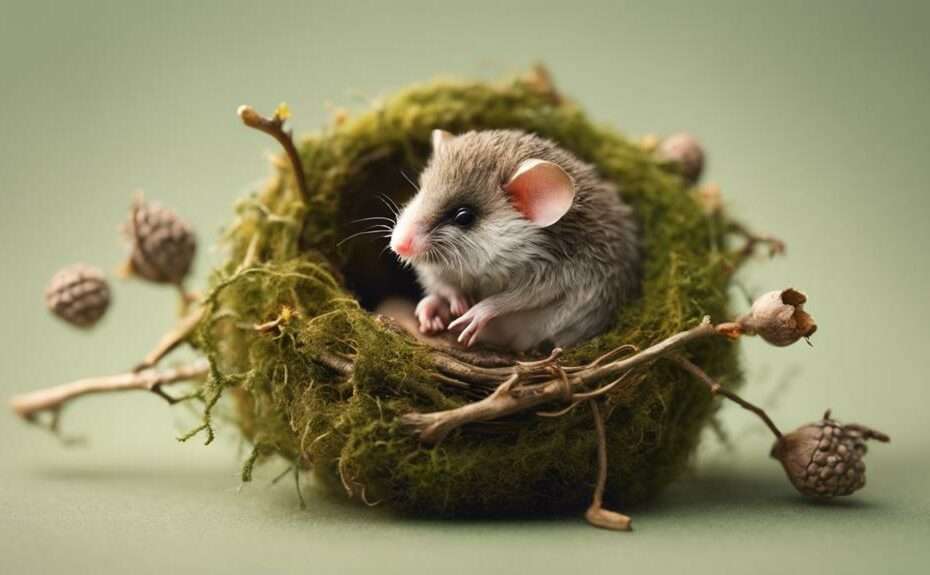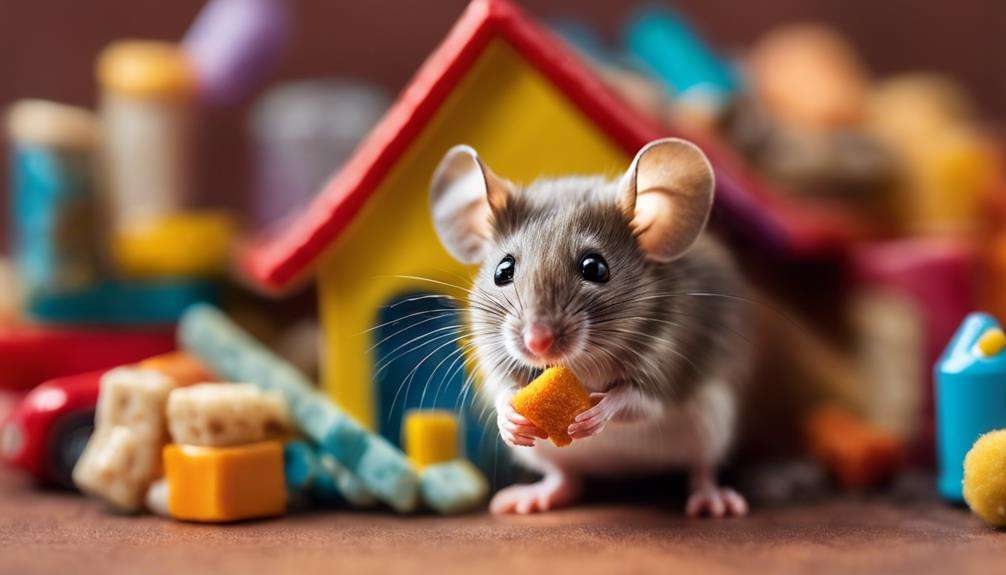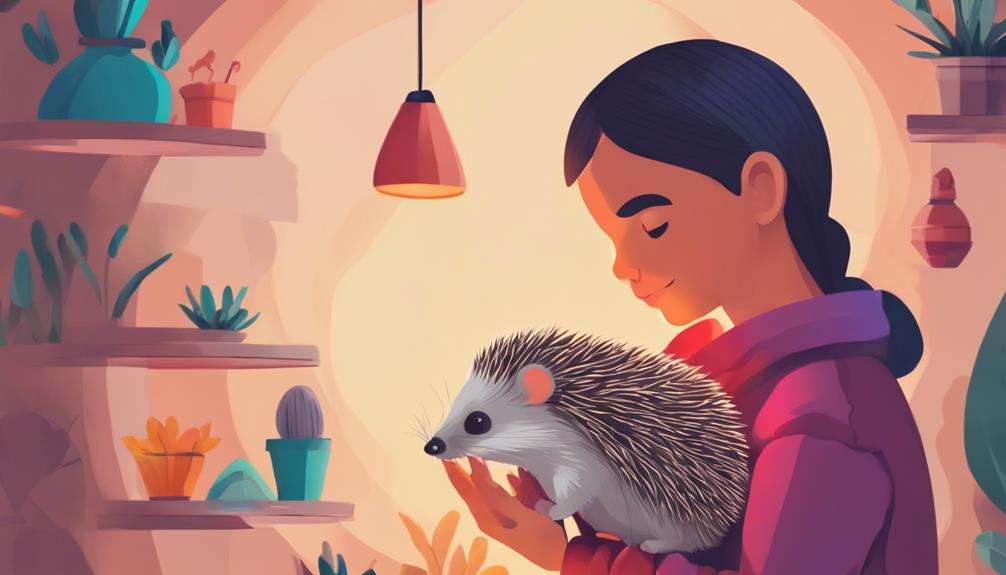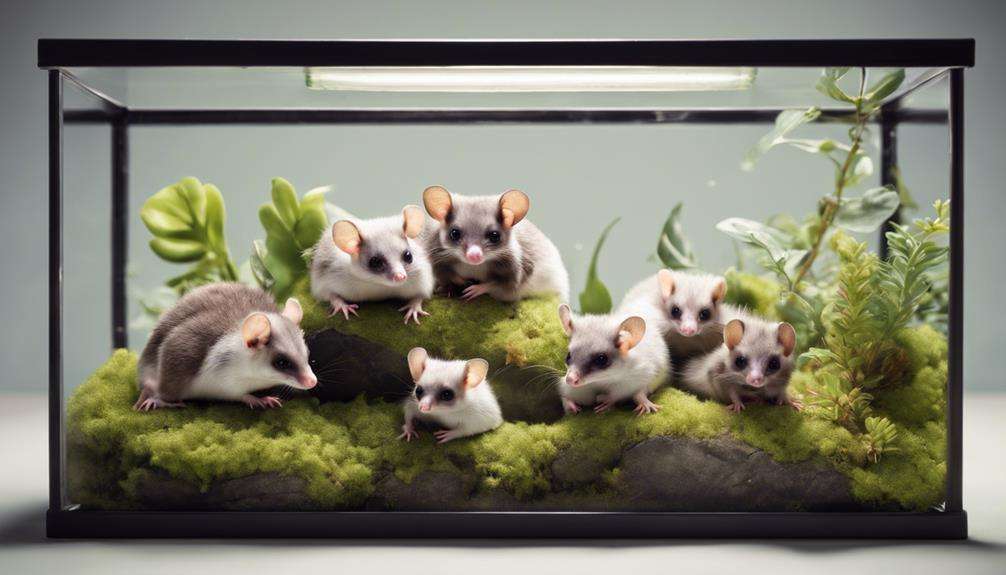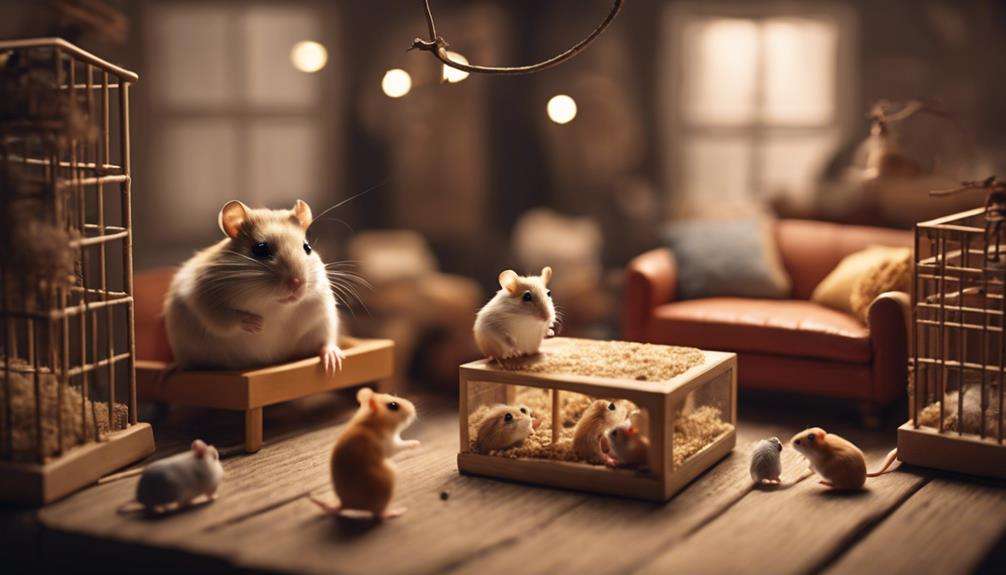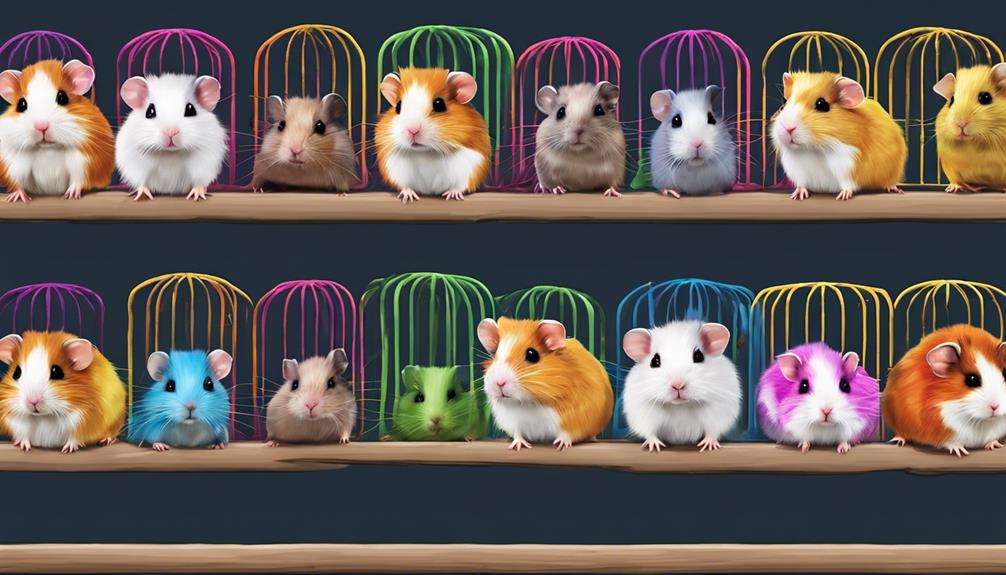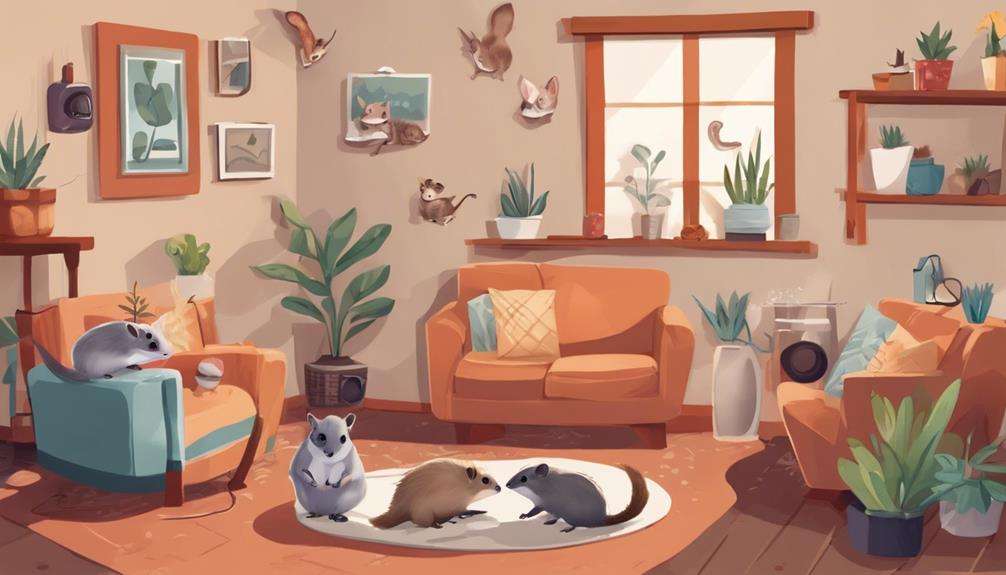Imagine you're venturing on a journey through a miniature forest, where each tiny creature holds a world of wonder within its grasp.
As you navigate the maze of care and companionship, discovering the intricate needs and quirks of these unusual small mammals, you find yourself drawn deeper into the labyrinth of their world.
Stay tuned to unravel the secrets of nurturing these tiny furball partners, and uncover the hidden gems that await in the domain of unique pet care.
Key Takeaways
- Choose small mammals carefully based on social needs, habitat requirements, and lifestyle compatibility.
- Provide spacious, enriching habitats with hideouts, exercise wheels, and climbing structures.
- Understand and interpret behavioral cues like grooming, burrowing, and territorial marking for communication.
- Offer a stimulating environment with toys, tunnels, and varied textures for mental and physical well-being.
Tiny Furball Partners Overview
Introducing small exotic mammals such as sugar gliders, hedgehogs, and degus, these tiny furball partners demand specialized care and tailored environments to guarantee their well-being as pets. Small mammals, due to their unique characteristics, require specific attention to make sure they thrive in captivity. Sugar gliders, for instance, are highly social creatures that need companionship to prevent loneliness and stress. Providing them with a suitable environment where they can glide and interact is important for their mental and physical health.
Hedgehogs, on the other hand, are nocturnal animals with distinct dietary requirements. Their diet should consist of high-quality cat food supplemented with insects to meet their nutritional needs adequately. Creating a quiet and dimly lit space for them during the day is essential for their well-being. Additionally, offering them hiding spots and toys for mental stimulation is beneficial.
Degus, being social rodents, necessitate a spacious cage to accommodate their active nature. Providing them with a dust bath for grooming and a diet rich in hay and fresh vegetables promotes their overall health. Making sure they've constant access to chew toys helps keep their teeth healthy and prevents overgrowth. Small mammals like these require diligent care and attention to thrive as pets.
Choosing the Right Tiny Mammal
When choosing the right tiny mammal to bring into your home, consider the species carefully to match your living environment and preferences.
Assess the size of the mammal to ensure it will thrive in your chosen space and lifestyle.
Research the specific care needs, social requirements, lifespan, and health concerns of each potential tiny furball companion for a well-informed decision.
Species Selection Tips
What factors should you consider when selecting the right tiny mammal species for your home and lifestyle?
When choosing a small pet, research the specific care requirements, lifespan, and behaviors of different species.
Evaluate the level of interaction and handling each species needs to match your preferences.
Make sure that regular veterinary care is available for the tiny mammal species you're interested in.
Consider the size of the mammal to make sure it fits your living space and lifestyle.
Factor in the dietary needs, exercise requirements, and socialization preferences of the species you're considering adopting.
Size Considerations Guide
Consider the specific space requirements of different small mammal species when selecting the right tiny mammal for your home and lifestyle. Small pets like chinchillas need multi-level cages to accommodate their need for movement and enrichment, while hedgehogs thrive in solid-bottomed enclosures.
It's essential to understand the proper care for these animals, including maintaining temperatures between 55F to 85F depending on the species. Provide appropriate bedding materials such as CareFresh or aspen shavings for comfort and hygiene in the enclosure. Tailor the habitat to meet the specific needs of the small mammal by including hideouts, exercise wheels, or climbing structures.
Ensuring the right size and setup will contribute significantly to the well-being of your tiny furry companion.
Habitat Setup and Enrichment
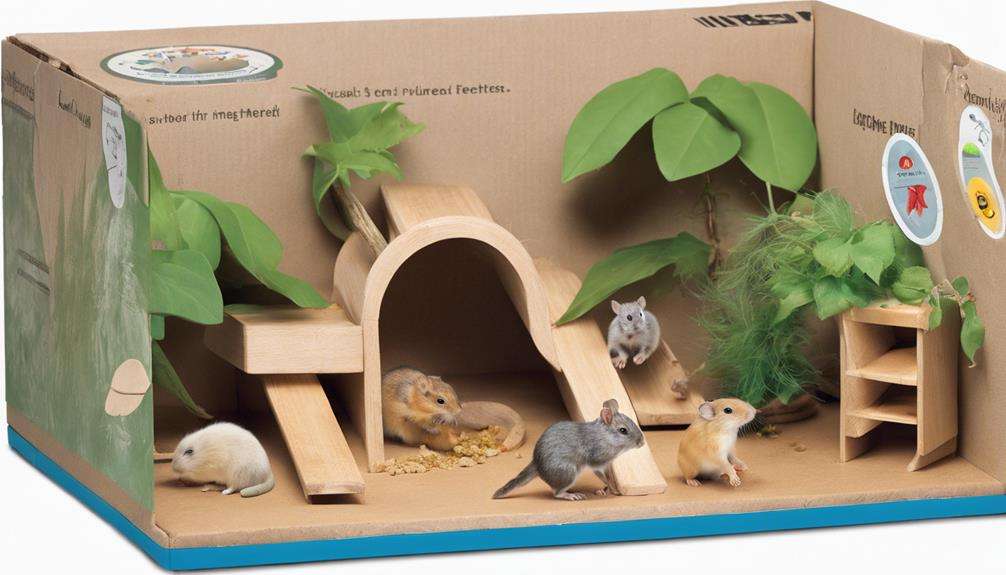
To guarantee the well-being of your small mammal, it's essential to provide a spacious cage that allows for natural behaviors and movement.
Enhance their habitat with tunnels, climbing platforms, and hiding spots to create a stimulating environment.
Including a variety of chew toys, exercise wheels, and tunnels will promote physical activity and mental enrichment for your tiny companion.
Cage Size Matters
Small mammals thrive when housed in cages that meet or exceed minimum size requirements, ensuring their physical and mental well-being. Adequate cage size is essential for small animals to exhibit natural behaviors, move freely, and avoid stress-related issues.
For instance, hamsters need a minimum of 360 square inches of floor space, while guinea pigs require at least 7.5 square feet of space. Providing sufficient room allows small mammals to engage in physical activities like running, burrowing, and exploring, promoting their overall health.
Additionally, a spacious cage enables the inclusion of enrichment items such as toys, hideouts, and exercise wheels, which contribute to the mental stimulation and well-being of small mammals. Hence, ensuring proper cage size is fundamental in creating a comfortable and enriching environment for these tiny creatures.
Stimulating Environment Essentials
To secure high-quality well-being for small mammals, establish a stimulating environment within their habitat through the inclusion of hiding spots, tunnels, platforms, chew toys, exercise wheels, climbing structures, and a variety of safe bedding materials and enrichment items. These elements are essential for their care as they provide mental stimulation, physical exercise, and a sense of security.
Utilize safe bedding materials like paper-based bedding or fleece to make sure comfort and hygiene levels. Offer a range of textures and materials such as cardboard boxes, wooden toys, and safe branches to enrich their environment. Remember to rotate toys and rearrange the habitat regularly to prevent boredom and encourage natural behaviors.
Hideouts and Toys
Incorporate a variety of hideouts and toys into the habitat setup for small mammals to enrich their environment and promote mental stimulation and physical activity. Providing small hideouts mimics their natural instinct to seek shelter, enhancing their sense of security.
Toys like chew blocks, tunnels, and hanging ropes offer mental stimulation and encourage physical activity in small mammals, contributing to their overall well-being. Enriching the habitat with interactive toys prevents boredom and promotes a healthy, active lifestyle.
Regularly rotating toys and introducing new items prevent habituation, keeping small mammals engaged and entertained. Opt for toys made from safe materials such as untreated wood, natural fibers, and non-toxic plastics to guarantee the safety of small mammals during playtime.
Feeding and Nutrition Tips
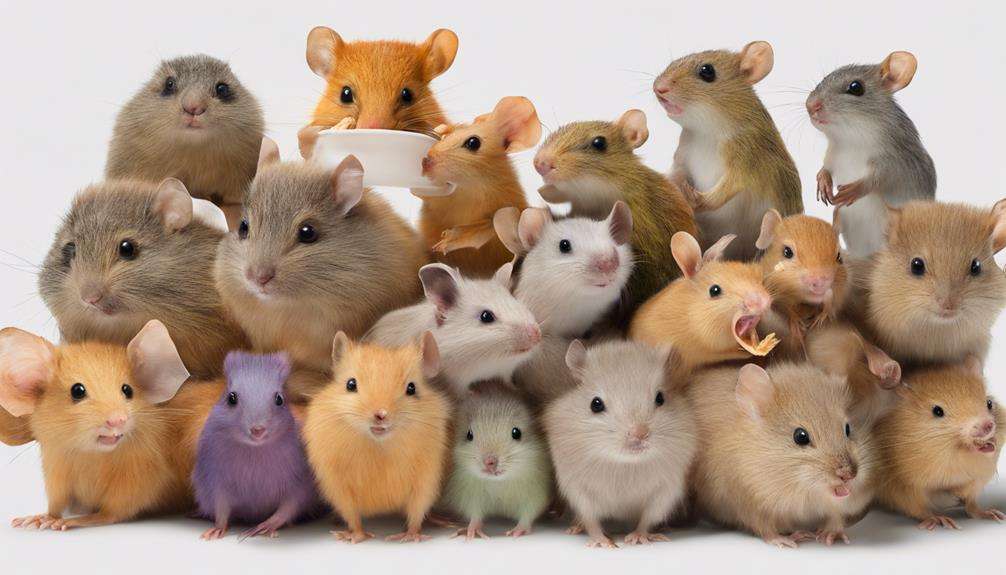
Offering a varied diet consisting of pellets, fresh vegetables, fruits, and hay is important to meeting the nutritional requirements of your small mammal. Guinea pigs, for example, require a diet high in Vitamin C, which can be obtained from fresh vegetables like bell peppers and leafy greens. Timothy hay is an essential component of their diet, aiding in digestion and providing necessary fiber. Limit sugary and fatty treats to maintain a healthy weight and prevent health issues such as obesity. Fresh water should always be available in a water bottle or dish to keep your pet hydrated.
Consult with a veterinarian or exotic pet specialist for specific dietary recommendations tailored to your small mammal's species. Monitoring your small mammal's weight is critical, and adjustments to their diet may be necessary to ensure prime health and well-being. By providing a balanced diet, fresh water, and appropriate treats, you can help your tiny furball partner thrive and lead a healthy life.
Grooming and Hygiene Essentials
With a focus on maintaining your small mammal's physical well-being, let's now shift our attention to the grooming and hygiene essentials necessary for their best health, particularly focusing on rabbit care.
Regular grooming is essential, especially for long-haired rabbits, to prevent matting and maintain their coat health. Tools like fur splitters or mat rakes can assist in detangling and shaving matted fur. Additionally, nail clipping is vital for rabbits due to their 18 toenails, requiring care to avoid cutting the quick (vein).
Lop-eared rabbits are prone to ear infections, emphasizing the importance of regular ear cleanings using vet-recommended solutions. Health checks for rabbits should also encompass regular tooth inspections as their teeth continuously grow, necessitating monitoring for overgrown or misaligned teeth.
Understanding Tiny Furball Behavior
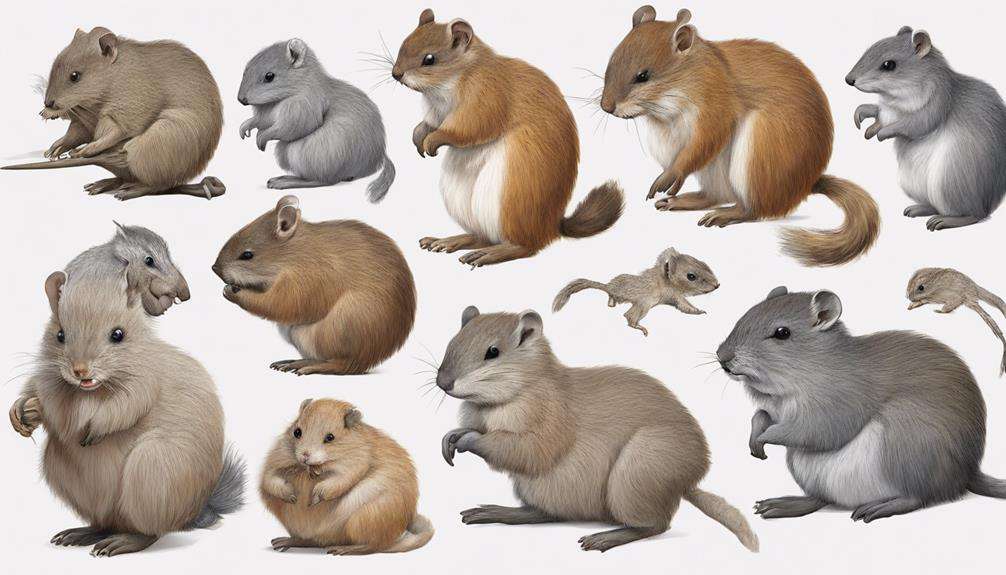
Tiny furballs, such as hedgehogs and sugar gliders, exhibit distinct behavior patterns that serve as communication signals within their species. These behaviors can include:
- Gliding
- Self-anointing
- Grooming
- Scent marking
Behavior Patterns in Furballs
Small mammals exhibit a diverse range of behavior patterns, including social grooming, burrowing, nesting, and territorial marking, providing valuable insights into their emotional states and needs. These behaviors are essential for their survival as prey species in the wild. Understanding these patterns allows you to build strong bonds with your small companion.
Social grooming, where furballs groom each other, strengthens social ties and promotes group cohesion. Burrowing behavior is a natural instinct that helps them feel secure and safe. Nesting behaviors indicate a need for comfort and warmth. Territorial marking, through scent or markings, establishes boundaries and communicates ownership.
Communication Signals of Furballs
Observing the body language, vocalizations, and scent marking of furballs is essential for understanding their communication signals and interpreting their emotions and needs accurately.
Tiny furballs use a variety of cues to express themselves. Their body language, such as ear positions and tail movements, can convey emotions like fear, contentment, or excitement. Vocalizations play an important role, with different sounds indicating various moods or needs.
For instance, flattened ears may signal fear or submission, while a raised tail could denote excitement or dominance. By paying attention to these communication signals, pet owners can develop a deeper bond with their furball companions and provide better care tailored to their furry friends' emotional states and requirements.
Health and Wellness Guidelines
Regular veterinary checkups play a pivotal role in monitoring the overall health and wellness of unusual small mammals. These checkups help in early detection of any health issues that may arise in tiny furball partners. Signs of dental problems, such as overgrown teeth, and respiratory infections should be closely monitored, as these can greatly impact the well-being of your pet. Providing a clean living area, fresh food, water, and regular exercise are essential for maintaining their health.
Ensuring a nutritious diet is vital for the best health of unusual small mammals. A diet rich in high-quality pellets, hay, fresh vegetables, and fruits, with limited sugary treats, is ideal. Additionally, bonding with your pet through daily interaction, gentle handling, and providing toys for entertainment not only promotes their overall wellness but also contributes to their happiness. By following these health and wellness guidelines, you can help your tiny furball partner live a long and healthy life.
Bonding and Socialization Techniques
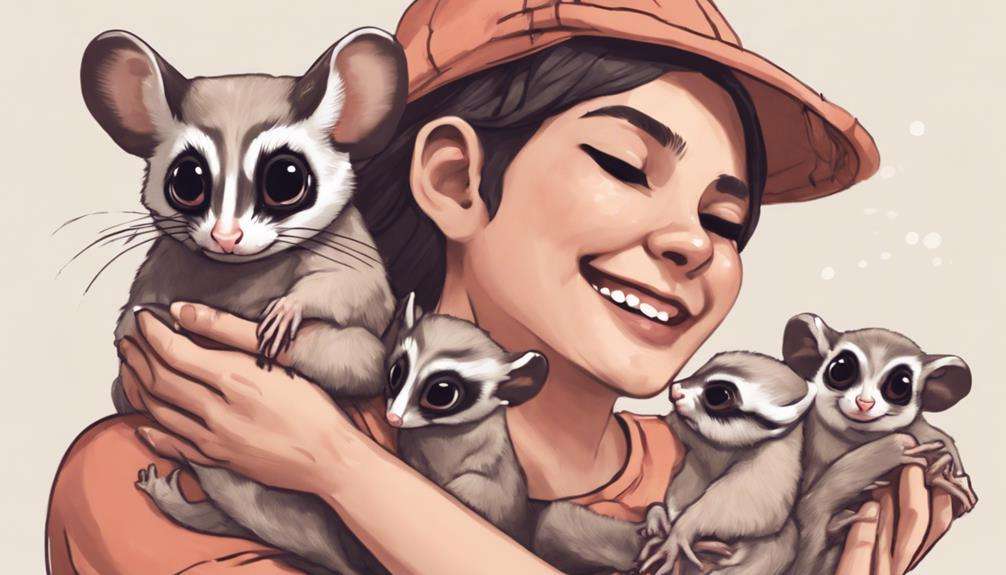
To establish a strong bond with your small mammal, dedicate daily quality time for interaction and play, fostering a sense of companionship and trust. Bonding techniques are important in small mammal care to guarantee a healthy relationship between you and your furry companion.
Handle your small mammal gently, respecting their boundaries and providing a variety of safe toys for mental stimulation and enrichment. Socialization plays a key role in their development; if appropriate for their species, introduce them to other pets to promote positive social behaviors.
Regular communication is essential; talk to your small mammal consistently to establish trust and companionship, strengthening the bond between you. Creating a safe and secure environment for bonding activities is paramount; make sure your small mammal feels comfortable and secure during interactions.
Training Your Tiny Mammal
Training your tiny mammal can be achieved through the use of positive reinforcement techniques such as treats, toys, and clicker training. When training small mammals like rats, gerbils, and rabbits, it's essential to establish clear communication channels. Treats serve as valuable rewards for desired behaviors, while toys can aid in training exercises and provide enrichment. Clicker training involves associating a distinct sound with a reward to mark the exact moment the desired behavior is performed.
To effectively train your small mammal, start with simple tricks like coming when called or using a litter box. Consistency is key; reinforce good behavior immediately with rewards. Be patient and keep training sessions short to maintain your tiny furball's interest and focus. Through training, you not only enhance your pet's abilities but also strengthen the bond between you. Training offers mental stimulation and enrichment, contributing to your small mammal's overall well-being and happiness.
Unique Aspects of Tiny Furball Care
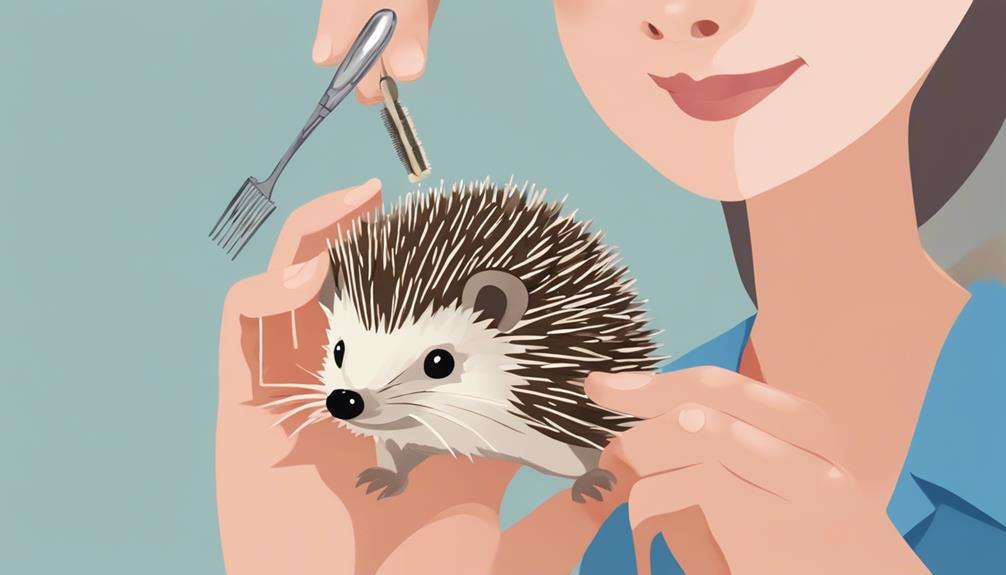
When caring for tiny furballs, it's imperative to understand their unique dietary requirements tailored to each species. Proper nutrition plays a critical role in maintaining the health and well-being of small mammals, with specific dietary needs varying among different species. Consultation with a veterinarian specializing in exotic pets is recommended to guarantee the correct balance of nutrients for your tiny furball companion. Additionally, veterinary medicine tailored to small mammals can provide valuable insights into preventive care and early detection of health issues.
Creating a suitable environment for tiny furballs also involves considering their bedding material. Paper-based bedding is often recommended for its absorbency, softness, and dust-free nature, making it a safe and comfortable choice for many small mammals. Providing enrichment activities that cater to the unique behaviors and social interaction preferences of each species is essential for mental stimulation and overall well-being. By tailoring care to the specific needs of tiny furballs, you can guarantee a happy and healthy life for your pint-sized companion.
Frequently Asked Questions
How Do You Take Care of Small Mammals?
To care for small mammals, guarantee proper feeding habits and offer enrichment activities. Monitor health concerns and practice gentle handling techniques. Following these steps will contribute to the overall well-being and happiness of your furry companions.
What Is the Easiest Small Mammal to Take Care Of?
When caring for small mammals, hamsters are often regarded as the easiest due to their low maintenance needs. Providing proper housing, diet, and interaction is key. Guinea pigs, mice, and gerbils also make great choices for those new to small pet care.
What Is the Easiest Furry Pet to Take Care Of?
Guinea pigs are ideal furry companions for those seeking low-maintenance pets. Their small size brings big joy to households. With simple dietary and housing needs, minimal grooming requirements, and social nature, they offer easy care and delightful companionship.
What Is the Smallest Pet You Can Own?
You can own the Etruscan shrew, weighing 1.8 grams, as the smallest pet mammal. Guarantee unique housing and a special diet. Consult a vet skilled in caring for small mammals. Prioritize safety and well-being.
Conclusion
To sum up, caring for your tiny furball partner requires dedication and attention to detail. Remember the old saying, 'An ounce of prevention is worth a pound of cure.'
By following the guidelines provided in this care guide, you can make sure that your small mammal pet lives a happy and healthy life.
Take the time to create a safe and enriching environment, provide proper nutrition, and establish a strong bond with your furry companion for a rewarding pet ownership experience.
